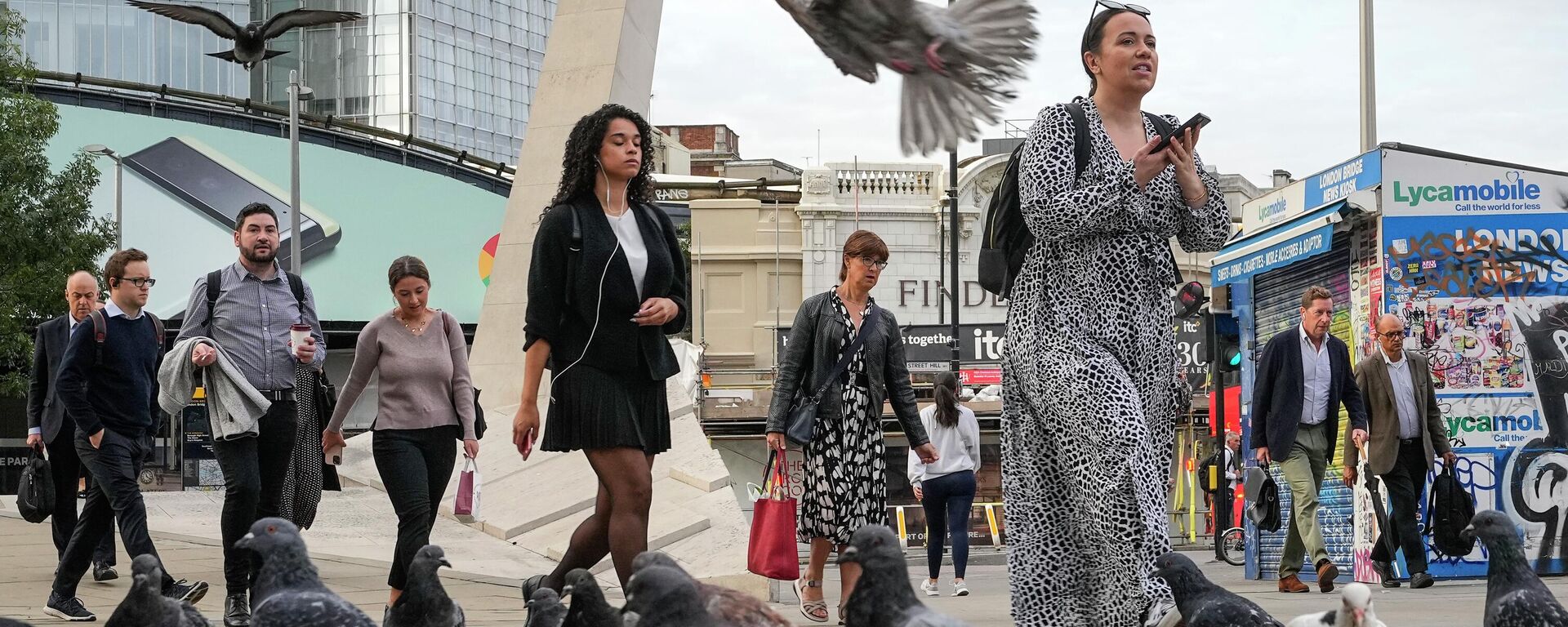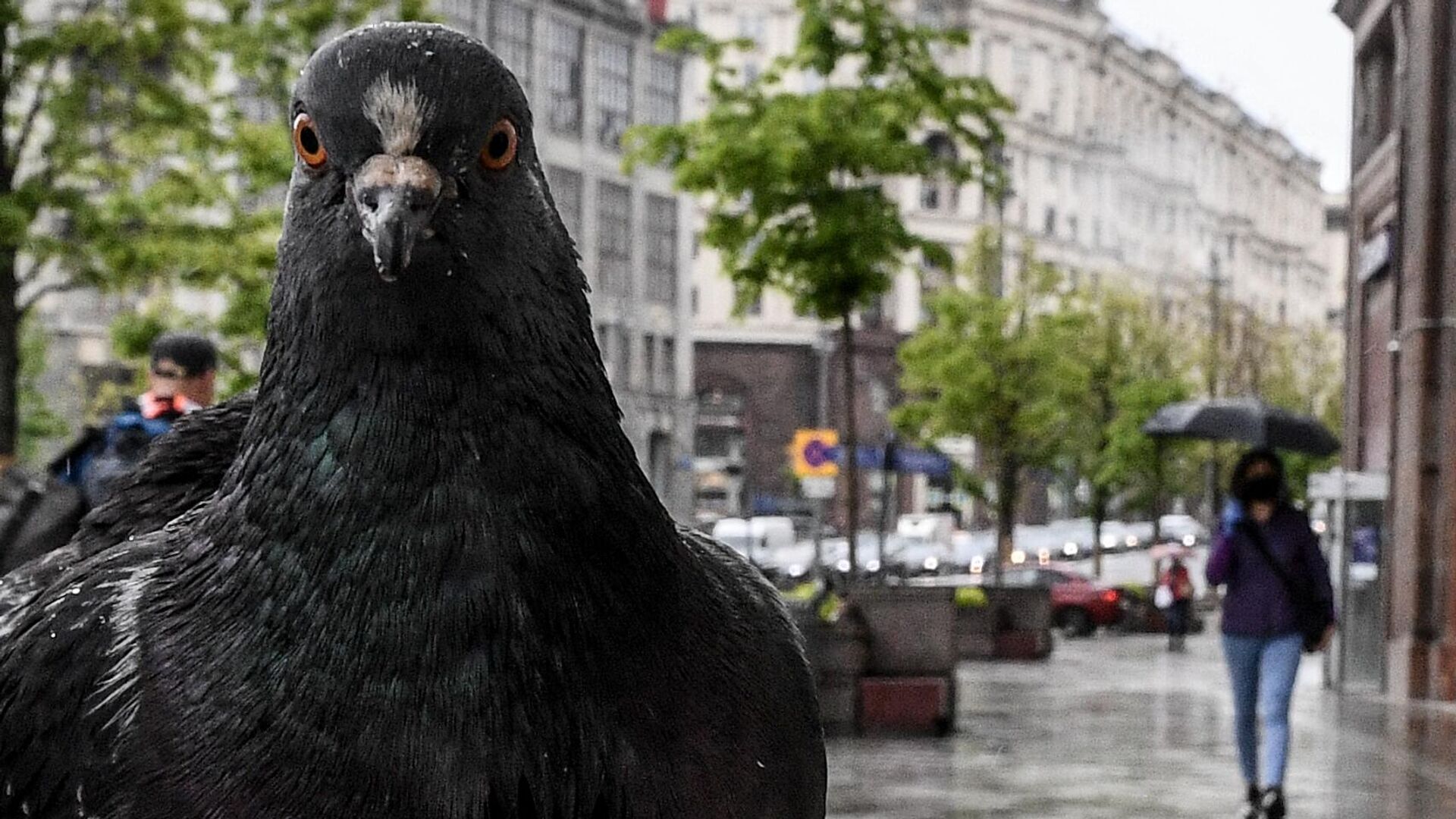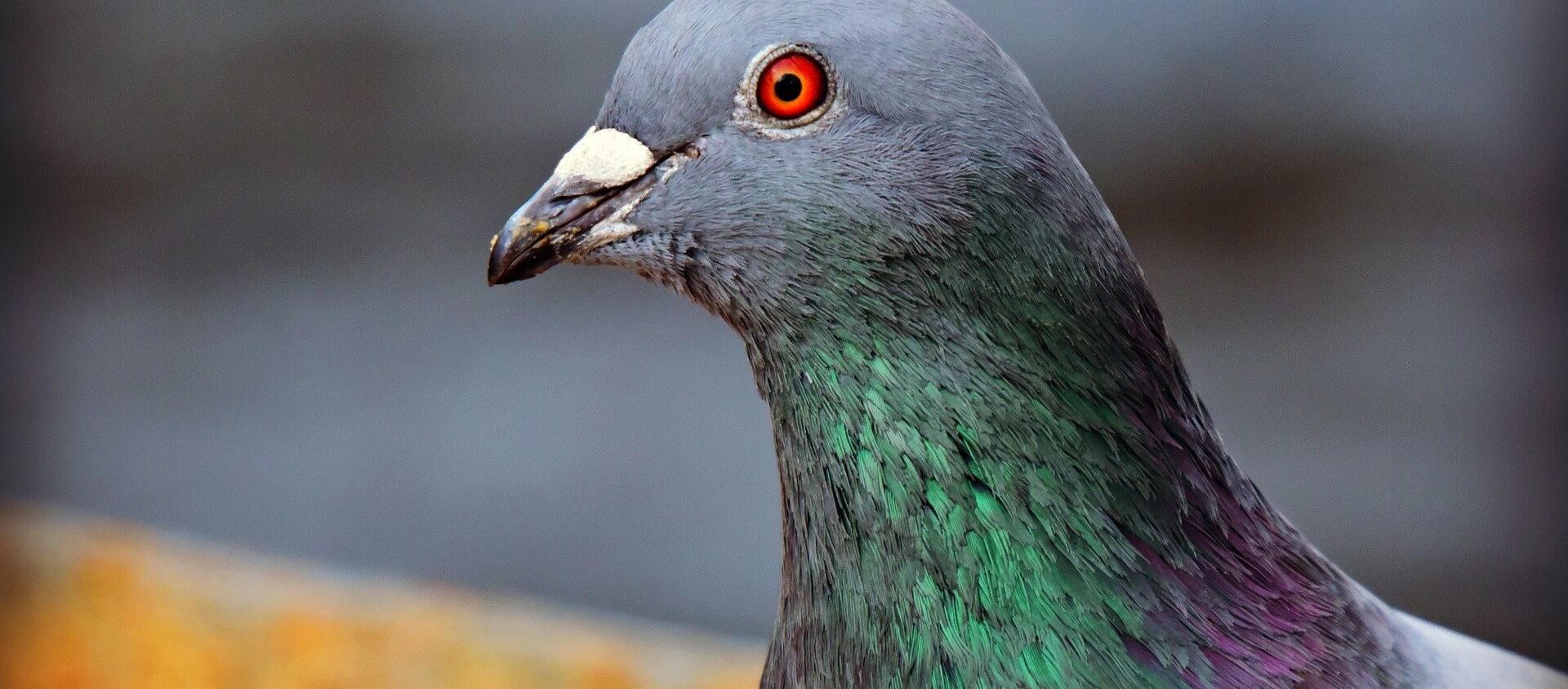https://sputnikglobe.com/20231028/scientists-discover-what-pigeons-and-ai-have-in-common-1114550233.html
Scientists Discover What Pigeons and AI Have in Common
Scientists Discover What Pigeons and AI Have in Common
Sputnik International
Pigeons have turned out to be feathered “Einsteins” after demonstrating their innate ability to perform several visual tasks. Such findings hint at nature's efficient algorithms and might provide applicable insights into understanding brain-related injuries.
2023-10-28T13:13+0000
2023-10-28T13:13+0000
2023-10-28T13:13+0000
beyond politics
university of iowa
ohio state university
society
science & tech
scientists
scientific research
https://cdn1.img.sputnikglobe.com/img/07e7/0a/1c/1114552447_0:0:1708:961_1920x0_80_0_0_6a56046f1a4fe80fa4fafa29cb3de3c6.jpg
Recent research indicates that pigeons' problem-solving capabilities align with those of artificial intelligence.Despite frequently being dismissed as mere pests, pigeons possess remarkable intelligence, boasting abilities to recognize individuals, perceive vibrant hues, chart intricate paths, convey messages, and even play a role in life-saving feats.In a study involving 24 pigeons, the birds were introduced to various visual tasks. They learned some tasks within days and others over weeks. The researchers discovered that pigeons use a mechanism to make accurate decisions that resemble the one AI models use to make correct predictions.Edward Wasserman, study co-author and professor of experimental psychology at the University of Iowa, suggested that pigeon behavior indicates nature might have developed an algorithm effective in mastering challenging tasks. He noted that while it might not be the fastest, it is consistently effective.On a digital display, pigeons observed varied visual elements, including lines of differing thickness, alignments, and designs, in addition to segmented and layered circles. The birds could then tap a button on either side to categorize these visuals. Correct choices earned them a food pellet, while incorrect responses went unrewarded.Brandon Turner, the lead author of the study and a professor of psychology at Ohio State University, suggested that pigeons do not operate based on a specific rule. He explained that they learn via trial and error. He gave an example, noting that when the birds were presented with a particular visual labeled as "category A," they would classify anything resembling it under the same category, showcasing their knack for recognizing similarities.Throughout the trials, pigeons enhanced their decision-making accuracy, soaring from 55 percent to 95 percent for basic tasks. However, when faced with intricate tasks, their precision rose from 55 percent to 68 percent.While AI systems are designed to identify patterns and make informed choices, pigeons, as studies reveal, have an innate ability for the same. Additionally, pigeons demonstrate an uncanny skill in recognizing resemblances between distinct items.The research team is now keen on partnering with experts in pigeon brain studies. Their aspiration is that such collaborations shed light on insights related to human brain injuries.
https://sputnikglobe.com/20200725/scientists-have-reportedly-discovered-remains-of-giant-pigeon-1079980665.html
https://sputnikglobe.com/20221031/zombie-pigeons-walk-in-uk-after-infection-leaves-them-with-twisted-necks---reports-1102858127.html
Sputnik International
feedback@sputniknews.com
+74956456601
MIA „Rossiya Segodnya“
2023
Chimauchem Nwosu
https://cdn1.img.sputnikglobe.com/img/07e7/09/01/1113046371_0:99:1536:1635_100x100_80_0_0_9c5c627283eca931c39fe4852bbb301c.jpg
Chimauchem Nwosu
https://cdn1.img.sputnikglobe.com/img/07e7/09/01/1113046371_0:99:1536:1635_100x100_80_0_0_9c5c627283eca931c39fe4852bbb301c.jpg
News
en_EN
Sputnik International
feedback@sputniknews.com
+74956456601
MIA „Rossiya Segodnya“
Sputnik International
feedback@sputniknews.com
+74956456601
MIA „Rossiya Segodnya“
Chimauchem Nwosu
https://cdn1.img.sputnikglobe.com/img/07e7/09/01/1113046371_0:99:1536:1635_100x100_80_0_0_9c5c627283eca931c39fe4852bbb301c.jpg
pigeons, pigeon research, artificial intelligence, ai, ai models, edward wasserman, university of iowa, algorithm, experimental psychology, psychology, brandon turner, ohio state university, ai systems, cognition, human brain injuries, pigeon brain studies.
pigeons, pigeon research, artificial intelligence, ai, ai models, edward wasserman, university of iowa, algorithm, experimental psychology, psychology, brandon turner, ohio state university, ai systems, cognition, human brain injuries, pigeon brain studies.
Scientists Discover What Pigeons and AI Have in Common
Pigeons have turned out to be feathered “Einsteins” after demonstrating their innate ability to perform several visual tasks. Such findings hint at nature's efficient algorithms and might provide applicable insights into understanding brain-related injuries.
Recent research indicates that pigeons' problem-solving capabilities align with those of artificial intelligence.
Despite frequently being dismissed as mere pests, pigeons possess remarkable intelligence, boasting abilities to recognize individuals, perceive vibrant hues, chart intricate paths, convey messages, and even play a role in life-saving feats.
In a study involving 24 pigeons, the birds were introduced to various visual tasks. They learned some tasks within days and others over weeks. The researchers discovered that
pigeons use a mechanism to make accurate decisions that resemble the one AI models use to make correct predictions.
Edward Wasserman, study co-author and professor of experimental psychology at the University of Iowa, suggested that pigeon behavior indicates nature might have developed an algorithm effective in mastering challenging tasks. He noted that while it might not be the fastest, it is consistently effective.
On a digital display, pigeons observed varied visual elements, including lines of differing thickness, alignments, and designs, in addition to segmented and layered circles. The birds could then tap a button on either side to categorize these visuals. Correct choices earned them a food pellet, while incorrect responses went unrewarded.
Brandon Turner, the lead author of the study and a professor of psychology at Ohio State University, suggested that pigeons do not operate based on a specific rule. He explained that they learn via trial and error. He gave an example, noting that when the birds were presented with a particular visual labeled as "category A," they would classify anything resembling it under the same category, showcasing their knack for recognizing similarities.
Throughout the trials, pigeons enhanced their decision-making accuracy, soaring from 55 percent to 95 percent for basic tasks. However, when faced with intricate tasks, their precision rose from 55 percent to 68 percent.
“Using more humble animals like pigeons, we can test how far they can go with a mind that is [we think] solely or mostly associative…This paper shows how incredibly strong associative systems can be, how true cognition-like they are,” acknowledged Onur Gunturkun, professor of behavioral neuroscience at Ruhr University Bochum, who was part of the research team.
While AI systems are designed to identify patterns and make informed choices, pigeons, as studies reveal, have an innate ability for the same. Additionally, pigeons demonstrate an uncanny skill in recognizing resemblances between distinct items.
The research team is now keen on partnering with experts in pigeon brain studies. Their aspiration is that such collaborations shed light on insights related to human brain injuries.

31 October 2022, 09:08 GMT





